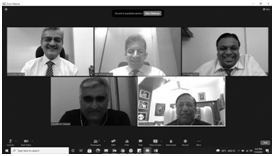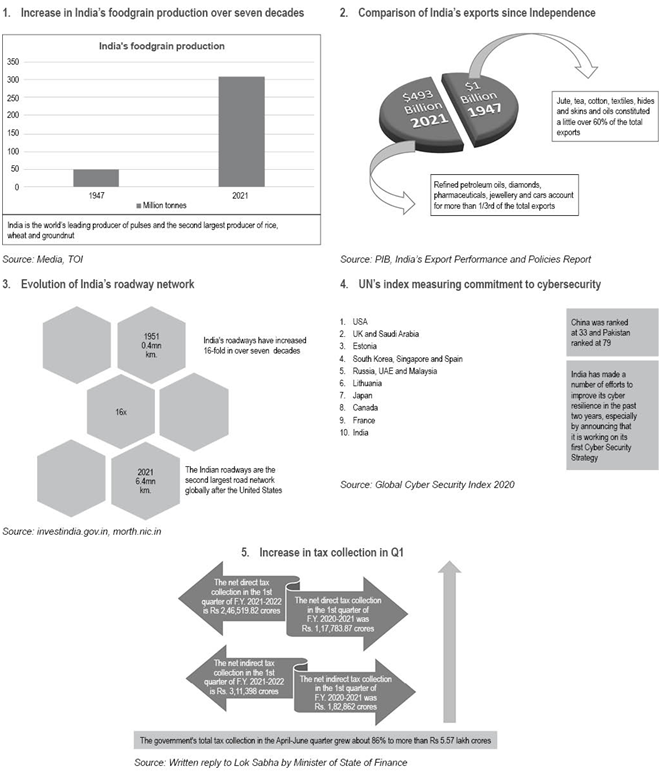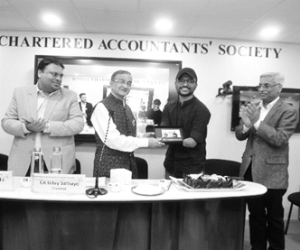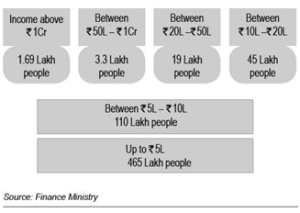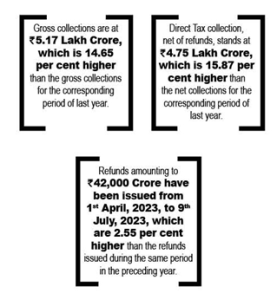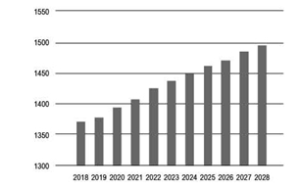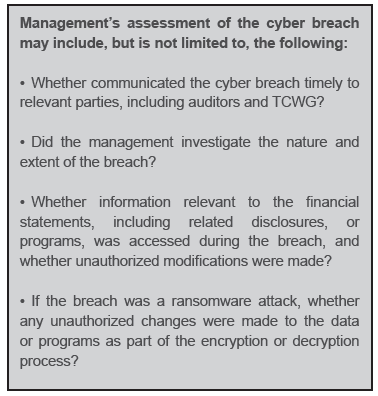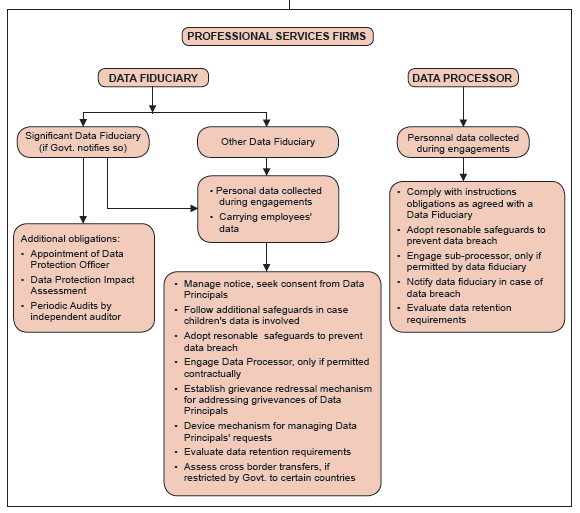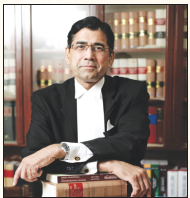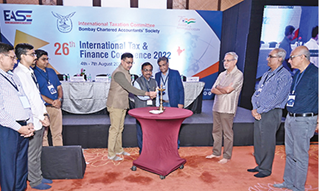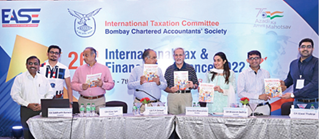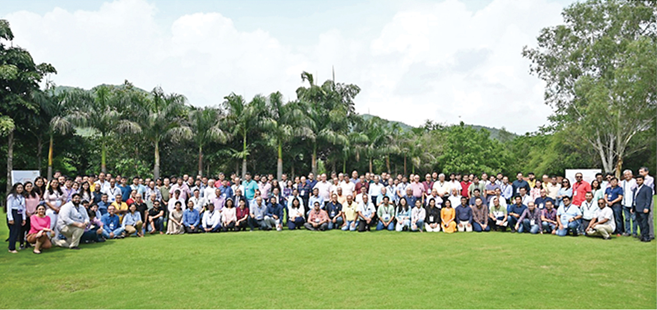In the ensuing paragraphs, we have analysed the provisions of the Act. The activities of the database service provider are generally undertaken outside India, and therefore, arguably, income earned from granting access to the database may not be considered as accruing or arising in India u/s 5 of the Act. One needs to consider if the income would be considered ‘deeming to accrue or arise in India’ u/s 9 of the Act. Under the domestic tax provisions of the Act, one would also need to evaluate whether the payment qualifies as ‘royalty’ or ‘fees for technical services’ or whether the SEP provisions are attracted.
2.1. Whether taxable as royalty?
The term ‘royalty’ has been defined in Explanation 2 to section 9(1)(vi) of the Act. In this regard, we would like to bring the attention of the readers to the feature in BCAJ in May, 2017, mentioned above, wherein the applicability of the definition of the term to the payment for access to an online database has been analysed. In the said feature, the authors have concluded that the payment towards the use of the database would not constitute royalty under the provisions of the Act as well as the relevant DTAA. While, to give a holistic view on the matter, in this article, we have covered the applicability of the provisions of the term ‘royalty’, the reader may refer to the May, 2017 article for further in-depth analysis.
The term ‘royalty’ is defined to mean consideration for the following:
“(i) the transfer of all or any rights (including the granting of a licence) in respect of a patent, invention, model, design, secret formula or process or trade mark or similar property;
(ii) the imparting of any information concerning the working of, or the use of, a patent, invention, model, design, secret formula or process or trade mark or similar property;
(iii) the use of any patent, invention, model, design, secret formula or process or trade mark or similar property;
(iv) the imparting of any information concerning technical, industrial, commercial or scientific knowledge, experience or skill;
(iva) the use or right to use any industrial, commercial or scientific equipment but not including the amounts referred to in section 44BB;
(v) the transfer of all or any rights (including the granting of a licence) in respect of any copyright, literary, artistic or scientific work including films or video tapes for use in connection with television or tapes for use in connection with radio broadcasting ; or
(vi) the rendering of any services in connection with the activities referred to in sub-clauses (i) to (iv), (iva) and (v).”
In the ensuing paragraphs, we have sought to analyse each and every aspect of the above definition.
2.1.1. Whether software?
Explanation 4 to section 9(1)(vi) of the Act further extends the definition to include consideration in respect of any right, property or information and also includes the transfer of right for use or right to use computer software (including granting of a licence).
Explanation 3 to section 9(1)(vi) defines the term ‘computer software’ as follows:
“For the purposes of this clause, “computer software” means any computer programme recorded on any disc, tape, perforated media or other information storage device and includes any such programme or any customized electronic data.”
As the expression ‘means’ has been used for defining ‘computer software’, one would need to interpret the provisions strictly within the confines of the definition. In other words, a database would be considered ‘computer software’ only if it falls within any of the aspects covered above.
In the case of an online database, it is not a computer programme recorded on any disc, tape, perforated media or other information storage device. The question that arises is whether it would be considered as ‘customized electronic data’. In this regard, one may refer to the decision of the Chennai ITAT in the case of ITO vs. Accurum India Pvt Ltd (2010) 126 ITD 69, wherein this term was analysed, albeit in the context of section 80HHE for the definition of ‘computer software’1. The ITAT held that for the data to be ‘customised’ it would need to be suitable for a specific customer only. In the present case, the data is available to all subscribers to the database and, therefore, cannot be considered customised.
Therefore, a database cannot be considered ‘computer software’, and the provisions of Explanation 3 and 4 of section 9(1)(vi) shall not apply in this case.
2.1.2. Whether patent, invention, model, design, secret formula or process or trade mark or similar property?
While the online database would not be considered a patent, invention, model, design or trade mark (the process is discussed in ensuing paragraphs), the question arises what does one mean by ‘similar property’.
Various Courts have referred to the Copyright Act, 1957 (‘CA 1957’) in this regard to determine whether ‘software’ can be considered copyright and, therefore, payment for the use of the same be considered as ‘royalty’ under the Act. The Karnataka High Court in the case of CIT vs. Wipro Ltd. (2013) 355 ITR 284, held that payment for the use of the database would constitute royalty. In this case, the Court relied on its earlier ruling in the case of CIT vs. Samsung Electronics Co. Ltd (2012) 345 ITR 494, and after relying on the definition of copyright under the CA 1957 had held that the payment for the use of computer software would constitute payment towards the use of copyright and therefore, taxable as ‘royalty’.
Section 2(o) of the CA 1957 provides as follows:
“‘literary work’ includes computer programmes, tables and compilations including computer databases;”
Further, section 14 of the CA 1957 provides as follows:
“For the purposes of this Act, “copyright” means the exclusive right subject to the provisions of this Act, to do or authorise the doing of any of the following acts in respect of a work or any substantial part thereof, namely:—
(a) in the case of a literary, dramatic or musical work, not being a computer programme,—
(i) to reproduce the work in any material form including the storing of it in any medium by electronic means;
(ii) to issue copies of the work to the public not being copies already in circulation;
(iii) to perform the work in public, or communicate it to the public;
(iv) to make any cinematograph film or sound recording in respect of the work;
(v) to make any translation of the work;
(vi) to make any adaptation of the work;
(vii) to do, in relation to a translation or an adaptation of the work, any of the acts specified in relation to the work in sub-clauses (i) to (vi);
(b) in the case of a computer programme,—
(i) to do any of the acts specified in clause (a);
(ii) to sell or give on commercial rental or offer for sale or for commercial rental any copy of the computer programme:
Provided that such commercial rental does not apply in respect of computer programmes where the programme itself is not the essential object of the rental;”
Recently, we had the landmark ruling in the context of the taxability of computer software as royalty. The Supreme Court in the case of Engineering Analysis Centre of Excellence (P.) Ltd vs. CIT (2021) 432 ITR 471, held that payment towards the use of the computer software would not constitute ‘royalty’ under the relevant DTAA, effectively overruling the decision of the Karnataka High Court in the case of Samsung Electronics (supra).
The relevant paragraphs of this landmark decision of the Apex Court, applicable to our analysis of taxability of online database, have been reproduced below:
“46. When it comes to an end-user who is directly sold the computer programme, such end-user can only use it by installing it in the computer hardware owned by the end-user and cannot in any manner reproduce the same for sale or transfer, contrary to the terms imposed by the EULA.
47. In all these cases, the “licence” that is granted vide the EULA, is not a licence in terms of section 30 of the Copyright Act, which transfers an interest in all or any of the rights contained in sections 14(a) and 14(b) of the Copyright Act, but is a “licence” which imposes restrictions or conditions for the use of computer software. Thus, it cannot be said that any of the EULAs that we are concerned with are referable to section 30 of the Copyright Act, inasmuch as section 30 of the Copyright Act speaks of granting an interest in any of the rights mentioned in sections 14(a) and 14(b) of the Copyright Act. The EULAs in all the appeals before us do not grant any such right or interest, least of all, a right or interest to reproduce the computer software. In point of fact, such reproduction is expressly interdicted, and it is also expressly stated that no vestige of copyright is at all transferred, either to the distributor or to the end-user. A simple illustration to explain the aforesaid position will suffice. If an English publisher sells 2000 copies of a particular book to an Indian distributor, who then resells the same at a profit, no copyright in the aforesaid book is transferred to the Indian distributor, either by way of licence or otherwise, inasmuch as the Indian distributor only makes a profit on the sale of each book. Importantly, there is no right in the Indian distributor to reproduce the aforesaid book and then sell copies of the same. On the other hand, if an English publisher were to sell the same book to an Indian publisher, this time with the right to reproduce and make copies of the aforesaid book with the permission of the author, it can be said that copyright in the book has been transferred by way of licence or otherwise, and what the Indian publisher will pay for, is the right to reproduce the book, which can then be characterised as royalty for the exclusive right to reproduce the book in the territory mentioned by the licence. ….
52. There can be no doubt as to the real nature of the transactions in the appeals before us. What is “licensed” by the foreign, non-resident supplier to the distributor and resold to the resident end-user, or directly supplied to the resident end-user, is in fact the sale of a physical object which contains an embedded computer programme, and is therefore, a sale of goods, which, as has been correctly pointed out by the learned counsel for the assessees, is the law declared by this Court in the context of a sales tax statute in Tata Consultancy Services (supra) (see paragraph 27).”
The Supreme Court has distinguished the rights in the software and held that the right to use the software is different from the right in the copyright in the software, and the former would not constitute royalty.
Using the same analogy for an online database, one does not get a right to use the copyright in the database itself but only the right to use the database and therefore, such a payment would not constitute royalty under the first limb of the definition.
Similar principles, that payment for the use of database would not constitute payment for the use of copyright in the database and therefore not royalty, are also emanating from the following recent decisions (albeit rendered before the above-referred decision of the Supreme Court):
- Mumbai ITAT in the case of American Chemical Society vs. DCIT (2019) 106 taxmann.com 253.
- Delhi ITAT in the case of Dow Jones & Company Inc vs. ACIT (2022) 135 taxmann.com 270.
- Ahmedabad ITAT in the cases of DCIT vs. Welspun Corporation Ltd (2017) 183 TTJ 697 and ITO vs. Cadila Healthcare Ltd (2017) 184 TTJ 178.
Further, there are various rulings such as that of the AAR in the cases of Dun & Bradstreet Espana, S.A., In re (2005) 272 ITR 99, Factset Research System Inc. and In re (2009) 317 ITR 169 or the Delhi ITAT in the case of McKinsey Knowledge Centre India (P.) Ltd. vs. ITO (2018) 92 taxmann.com 226, wherein it has been held that payment towards the use of database which only collates publicly available information, cannot be considered as ‘royalty’ under the Act or the DTAA.
2.1.3. Whether Process Royalty?
The term ‘process’ has been defined in Explanation 6 to section 9(1)(vi) of the Act as follows:
“For the removal of doubts, it is hereby clarified that the expression “process” includes and shall be deemed to have also included transmission by satellite (including up-linking, amplification, conversion for down-linking of any signal), cable, optic fibre or by any other similar technology, whether or not such process is secret;”
In the view of the authors, process would mean the way a particular activity is undertaken, and Explanation 6 merely extends the meaning of the term to cover the various modes of transmission of the process and to overrule certain judicial precedents which held that under the Act, for payment towards the process to be considered as ‘royalty’, such process should be secret.
In this scenario, the payment is not towards any process relating to the database. Therefore, this limb of the definition of ‘royalty’ is also not satisfied in the case of payment towards access to an online database.
2.1.4. Whether Equipment Royalty?
The term ‘royalty’ includes payment for the use or right to use industrial, commercial or scientific equipment.
In this regard, one may refer to the decision of the AAR in the case of Cargo Community Network (P.) Ltd, In re (2007) 289 ITR 355 wherein it has been held that amounts received towards the access granted to use an internet-based air cargo portal would constitute payment towards the use of ‘equipment’ and therefore, taxable as royalty under the Act. In the said case, the AAR concluded that it is not possible to use the portal without the server, and therefore, payment was made towards an integrated commercial-cum-scientific equipment, being the server on which the portal operates.
A similar view was also taken by the AAR in the case of IMT Labs (India) (P.) Ltd, In re (2006) 287 ITR 450.
However, in a subsequent decision of Dell International Services India (P) Ltd, In Re (2009) 305 ITR 37, the AAR has held that payment towards the use of a facility which uses sophisticated equipment would not be considered as payment towards the use of the equipment itself.
In the view of the authors, the decision of the AAR in the case of Dell (supra) presents a better view of the matter, and if one pays for access to the database, it cannot be said that one is paying for the use of the server on which such database is operated. Therefore, such a payment would not be considered towards the use or right to use industrial, commercial or scientific equipment.
2.1.5. Whether Experience Royalty?
Clause (iv) of Explanation 2 to section 9(1)(vi), defining the term ‘royalty’ includes payment towards the imparting of any information concerning technical, industrial, commercial or scientific knowledge, experience or skill.
The OECD Model Commentary on Article 12 explains the term as follows:
“11. In classifying as royalties payments received as consideration for information concerning industrial, commercial or scientific experience, paragraph 2 is referring to the concept of “know-how”. Various specialist bodies and authors have formulated definitions of know-how. The words “payments … for information concerning industrial, commercial or scientific experience” are used in the context of the transfer of certain information that has not been patented and does not generally fall within other categories of intellectual property rights. It generally corresponds to undivulged information of an industrial, commercial or scientific nature arising from previous experience, which has practical application in the operation of an enterprise and from the disclosure of which an economic benefit can be derived….
11.1 In the know-how contract, one of the parties agrees to impart to the other, so that he can use them for his own account, his special knowledge and experience which remain unrevealed to the public. It is recognised that the grantor is not required to play any part himself in the application of the formulas granted to the licensee and that he does not guarantee the result thereof……”
There is further guidance on this subject in the UN Model Commentary on Article 12, which provides as follows:
“16. Some members from developing countries interpreted the phrase “information concerning industrial, commercial or scientific experience” to mean specialized knowledge, having intrinsic property value relating to industrial, commercial, or managerial processes, conveyed in the form of instructions, advice, teaching or formulas, plans or models, permitting the use or application of experience gathered on a particular subject. “
The term ‘knowledge, experience or skill’ has been held to be referring to those intangibles or know-how which are acquired on undertaking a particular activity, but which may not necessarily be registered as an intangible.
If one refers to the meaning of the term, there are various decisions, such as the Hyderabad ITAT in the case of GVK Oil & Gas Ltd vs. ADIT (2016) 158 ITD 215, Mumbai ITAT in the case of Dy. DIT vs. Preroy AG (2010) 39 SOT 187, the AAR in the case of Real Resourcing Ltd, In re (2010) 322 ITR 558 and the Bombay High Court in the case of Diamond Services International (P) Ltd vs. Union of India (2008) 304 ITR 201, wherein the distinction between a contract for imparting know-how, experience or skill has been differentiated from a contract where such know-how, experience, skill has been used to provide services. There are various decisions which have been referred to above wherein the Courts have held that payment towards the use of publicly available information would not amount to imparting of any knowledge, experience or skill and, therefore, would not be considered ‘royalty’.
In this regard, it would be important to highlight the decision of the AAR in the case of ThoughtBuzz (P.) Ltd, In re (2012) 21 taxmann.com 129, wherein it has been held that income of a social media monitoring service, providing a platform for a subscription for users to engage with their customers, brand ambassadors, etc., would constitute payment for the use of commercial or industrial knowledge and therefore, taxable as royalty. In the said case, the taxpayer obtained information from blogs, forums, social networking sites, review sites, questions and answers sites and Twitter and collated the same for its users. The AAR did not provide detailed reasoning for arriving at this conclusion.
However, in the authors’ view, this may not be the better view as the information, which is collated by the database in question, was public information.
In most cases, the payment towards access to the database would not be considered ‘royalty’ as the payment would be towards information which is publicly available, but collated for the benefit of the users. However, one may need to evaluate, on the basis of the facts, if any knowledge or experience (whether belonging to the database service provider or otherwise) is imparted through the database, payment towards the use of such database, and if such experience is imparted, the transaction may be considered as ‘royalty’.
In view of the above, one may be able to take the view that the payment towards access to an online database would not constitute royalty under the Act.
2.2. Whether taxable as Fees for Technical Services?
The term ‘fees for technical services’ has been defined in Explanation 2 to section 9(1)(vii) of the Act to mean the following:
“For the purposes of this clause, ‘fees for technical services’ means any consideration (including any lump sum consideration) for the rendering of any managerial, technical or consultancy services (including the provision of services of technical or other personnel) but does not include consideration for any construction, assembly, mining or like project undertaken by the recipient or consideration which would be income of the recipient chargeable under the head “Salaries”;”
The first question which arises is whether such a payment would constitute ‘towards services’. While the term is not specifically defined in the Act, one may look at the general meaning of the term and such payment would constitute ‘towards services’. Arguably, such services would not be considered managerial or consultancy services. Further, such services do not involve any human intervention, and therefore, following the decision of the Supreme Court in the case of CIT vs. Kotak Securities Ltd (2016) 383 ITR 1, such services would not be considered ‘technical services’.
In the specific context of online databases, a similar view was taken by the Mumbai ITAT in the case of Elsevier Information Systems GmbH vs. DCIT (2019) 106 taxmann.com 401, wherein it was held that in the absence of any interaction between the customer/user of the database and the employees of the assessee, or any other material on record to show any human intervention while providing access to the database, such a payment could not be considered towards technical services.
Therefore, a subscription to an online database would not be considered as ‘fees for technical services’ u/s 9(1)(vii) of the Act.
2.3. Applicability of SEP provisions
The Finance Act, 2018 has introduced Significant Economic Presence (‘SEP’) provisions in India. Explanation 2A to section 9(1)(i) extends the definition of business connection to include SEP and SEP has been defined to mean the following:
(a) transaction in respect of any goods, services or property carried out by a non-resident with any person in India including provision of download of data or software in India, if the aggregate of payments arising from such transaction or transactions during the previous year exceeds such amount as may be prescribed; or
(b) systematic and continuous soliciting of business activities or engaging in interaction with such number of users in India, as may be prescribed.
Further, the Proviso to the Explanation also provides that the transactions or activities shall constitute SEP, whether or not:
(i) the agreement for such transactions or activities is entered in India; or
(ii) the non-resident has a residence or a place of business in India; or
(iii) the non-resident renders services in India.
In other words, the SEP provisions would apply even if such services are rendered outside India, if it is undertaken with any person in India and if the aggregate payments during the year exceed the threshold prescribed.
The CBDT vide Notification No. 41/2021/F.No.370142/11/2018-TPL dated 3rd May, 2021, has notified the thresholds to mean Rs. 2 crores in the case of payments referred to in clause (a) above and 3 million users in clause (b) above.
In the case of an online database, the question first arises is which of the above clauses of the Explanation would apply – whether the payment threshold or the number of users. As discussed above, the provision of access to the database may be considered a service, even if no human intervention is involved. Therefore, such services, not being FTS and rendered by a non-resident to any person in India, would trigger the SEP provisions if the payment threshold is exceeded. Further, if the number of users in India of such a database exceeds the number prescribed, SEP provisions could apply.
In other words, both the clauses of Explanation 2A could apply simultaneously, and even if one of the conditions prescribed is met, SEP provisions may apply to the said transactions.
2.4. Applicability of Explanation 3A of section 9(1)(i)
The Finance Act, 2020 extended the Source Rule for income attributable to operations carried out in India by inserting Explanation 3A to Section 9(1)(i), which reads as under:
“Explanation 3A.—For the removal of doubts, it is hereby declared that the income attributable to the operations carried out in India, as referred to in Explanation 1, shall include income from—
(i) such advertisement which targets a customer who resides in India or a customer who accesses the advertisement through internet protocol address located in India;
(ii) sale of data collected from a person who resides in India or from a person who uses internet protocol address located in India; and
(iii) sale of goods or services using data collected from a person who resides in India or from a person who uses internet protocol address located in India.’’
At the outset, in the authors’ view, and as explained in detail in our article in the March 2021 issue of BCAJ, Explanation 3A does not create a new source or nexus for the income of a non-resident in India, but it merely extends the source, which a non-resident may already have to tax the income specified above. Therefore, if the non-resident is otherwise not having a business connection in India, Explanation 3A would not impact the income of such taxpayers in India. On the other hand, if a non-resident has a business connection in India, say on account of the SEP provisions, the income as mentioned above would also be considered attributable to operations undertaken in India irrespective of whether they are attributable to the business connection or not.
In the case of an online database, income from providing access of database would not be covered under clause (i) above. Further, one may also be able to argue that the database is not selling the data but merely providing access to view the data, and therefore, clause (ii) may also not apply.
The database service provider is providing services and if the data used in those services from a person who resides in India or from an ISP located in India, clause (iii) may trigger and if such non-resident already has a business connection in India, the income from the provision of such services (even to other non-residents) may be taxed in India. However, if the database collects information from all over the world (say for example, a global legal database covering judicial precedents on a particular issue from all over the world including India), it may not be possible to attribute a particular value to the data collected from India.
3. TAXABILITY UNDER DTAA
In view of the above discussion, payment for subscription of an online database may not be considered Royalty or FTS under the Act or the DTAA. If the amount of payment or the number of users in India is exceeded, SEP provisions may be triggered, and the online database service provider may be considered as having a business connection in India. However, the income from subscription to the database would not be taxable in the absence of a PE in India under the relevant DTAA. Further, if the income from Indian users exceeds Rs. 2 crores, the EL ESS provisions may apply to such an online database service provider.











